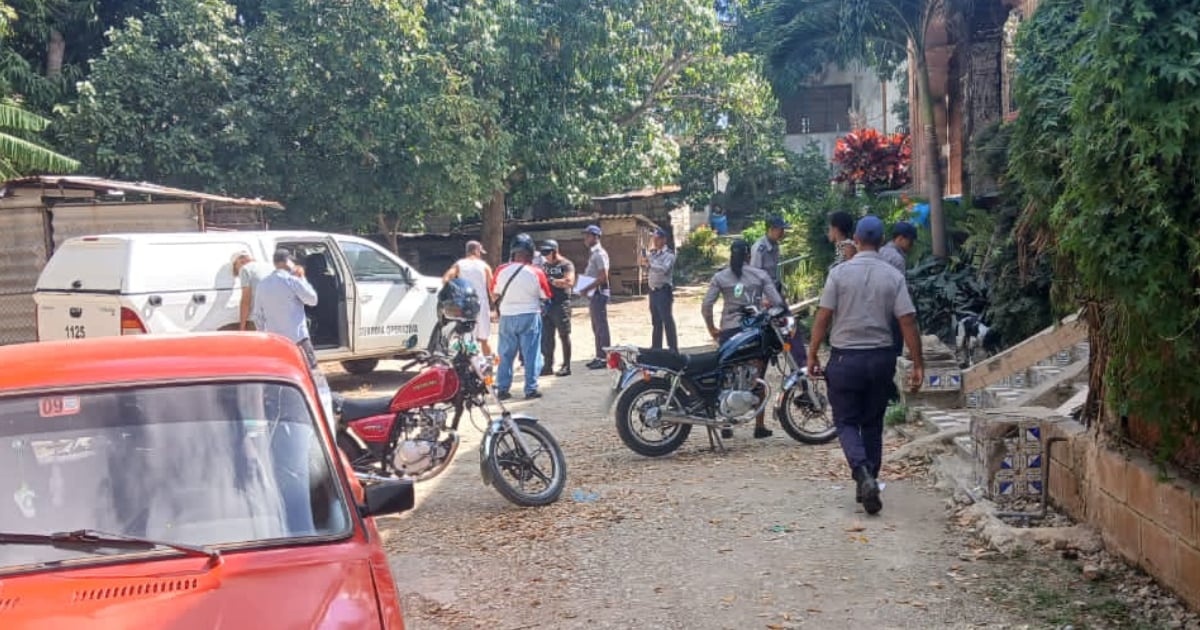In recent days, Cuban police have ramped up their anti-drug operations in the Havana municipalities of Marianao and Guanabacoa, leading to the arrest of several individuals suspected of narcotics trafficking, according to official sources.
On Monday, the Guanabacoa Municipal Government released a brief statement on Facebook announcing a drug-related police operation in the Quinta Corona area of the D’Beche neighborhood. The statement, which lacked specific details, emphasized the operation was conducted "without hesitation."
Further information was provided by a profile associated with the Ministry of the Interior (Minint), operated under the name Elizabeth Ferrer. This source confirmed the arrest of "two individuals allegedly involved" in the drug trade, a problem that has been escalating nationwide in recent years.
The profile shared photos reportedly sent by "reliable sources" showing the police action in Guanabacoa, along with news of the detained suspects, whose identities remain undisclosed. It also hinted at "other cases," underscoring the seriousness with which this societal issue is being tackled, and promised more updates on this and other cases as they develop in various areas.
On Tuesday, a similar operation was reported in the Pocito Palmar district of Marianao. According to the profile, the Ministry of the Interior (Minint) forces have launched a determined crackdown on drug activities. Reliable sources and followers indicated that a key figure in the clandestine operation was apprehended in that region.
The report highlighted the importance of "community vigilance and cooperation" in "identifying and neutralizing threats to social welfare in this neighborhood and beyond." It labeled the "joint effort between law enforcement and residents" as "crucial" in the fight against illegal activities.
Nevertheless, the statement sidestepped the alarming increase in drug sales, particularly of "el químico," a synthetic cannabinoid, in neighborhoods across the nation. Critics argue that authorities have been slow to respond to the rising tide of drug trafficking and consumption among the youth.
As of the publication of this article, official media outlets remain silent on these recent anti-drug operations. Earlier in January, a police operation in Cocosolo Zamora, Marianao, resulted in the arrest of three individuals involved in selling "papelitos," a street term for "el químico," which has wreaked havoc in Cuba in recent years.
Marianao, La Lisa, Arroyo Naranjo, and San Miguel del Padrón have been identified as the areas with the highest drug trafficking and consumption rates in Havana until 2024, as reported by Colonel Juan Carlos Poey of the Minint's anti-drug division on state television. Poey noted that these locations are hubs for drug trafficking and consumption, with significant activity detected in La Güinera (Arroyo Naranjo) and El Palenque (La Lisa), where methamphetamine use has been observed, signaling a shift from synthetic cannabinoids to more potent substances like methamphetamine (pills, powders, or crystals).
In September 2024, police detained 22 individuals in Havana for selling "el químico." In December, a man selling the same drug in Alamar, a district in East Havana, was arrested in a police operation after being linked to the intoxication of a person who consumed the substance he distributed.
In a notable legal case, the Provincial Court of Camagüey sentenced an inmate to 19 years in prison for introducing "el químico" into the prison where he was already serving a sentence.
Frequently Asked Questions About Drug Operations in Havana
What areas in Havana are most affected by drug trafficking?
Marianao, La Lisa, Arroyo Naranjo, and San Miguel del Padrón are the most affected areas, with significant drug trafficking and consumption activities.
What substances are prevalent in these areas?
Synthetic cannabinoids, known locally as "el químico," and methamphetamines have been reported in these areas.
How is the community involved in combating drug operations?
Community vigilance and cooperation are crucial for identifying and neutralizing drug-related activities, working closely with law enforcement.
